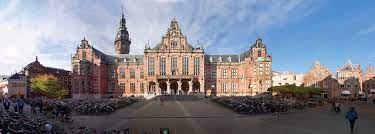University of Groningen: Groningen’s solar team on the grid once again
Groningen’s solar team Top Dutch Solar Racing recently competed in the iLumen European Solar Challenge (iESC) at Circuit Zolder in Belgium. This special event only takes place once every two years and is a quite a happening in the solar community. The team participated in this solar race for two reasons: to put the Northern Netherlands on the map, and to acquire knowledge for developing technical innovations for a greener future in the year ahead.
The Top Dutch Solar Racing project was launched five years ago, but the new team officially started on 1 September. The team has 23 new members – representing seven nationalities – who are supported by several predecessors from previous years. The students are studying a range of programmes at vocational, university of applied sciences and university level. Among them are nine students from the University of Groningen, studying Artificial Intelligence, Computing Science, Applied Physics, Applied Mathematics, and Industrial Engineering and Management. The team also has members studying non-technical subjects, ensuring that all positions are filled by people with the right knowledge.
The Groningen team’s first race
The team’s goal for the iESC was to complete as many laps as possible and to learn as much as possible. Nevertheless, there was one more challenge that they had to contend with; the race lasted 24 hours – which meant they had quite the night ahead of them! Fortunately, the team started its preparations early this year. ‘It’s a valuable learning experience to prepare for the Bridgestone World Solar Challenge in Australia,’ says team manager Rick Eichelsheim.
Green Lightning
Green Lightening – the car that set the fastest lap at the Belgian circuit two years ago – was once again chosen to line up on the starting grid this year. This car also most closely complied with iESC regulations. ‘Because we used this car, the team didn’t have to make as many changes, which meant that we saved time, money, and materials,’ explains Loeka Demkes, the team’s communications officer. ‘It also meant that the students could focus more on how an event like this is organized and how these cars are put together. They had the chance to really learn as much as possible, which was the whole point of taking part.’
An enlightening experience
In its class (challenger class), the team finished fifth out of eleven teams and was the second best Dutch team. ‘It was a very enlightening experience,’ says Demkes enthusiastically. ‘The team pulled off a very quick tyre change and was one of the best in the dynamic test.’ The technical students also identified potential areas for improvement, which they can now use for the construction of their own car.
Plans for the future
‘The team’s goal now is to put our best foot forward next October at the Bridgestone World Solar Challenge in Australia. In that race, participants have to drive as fast as they can from one end of Australia to the other,’ Demkes explains.

